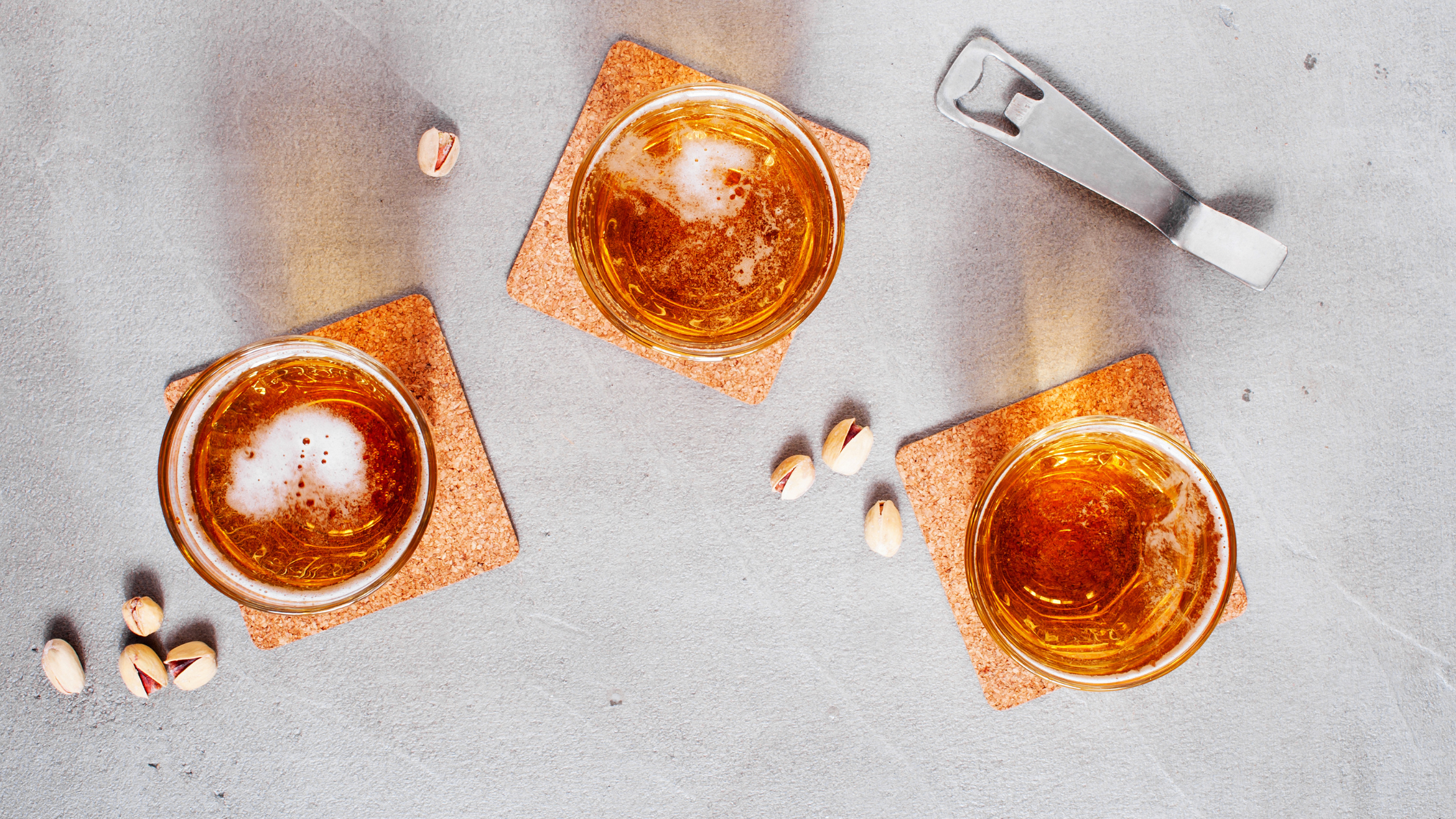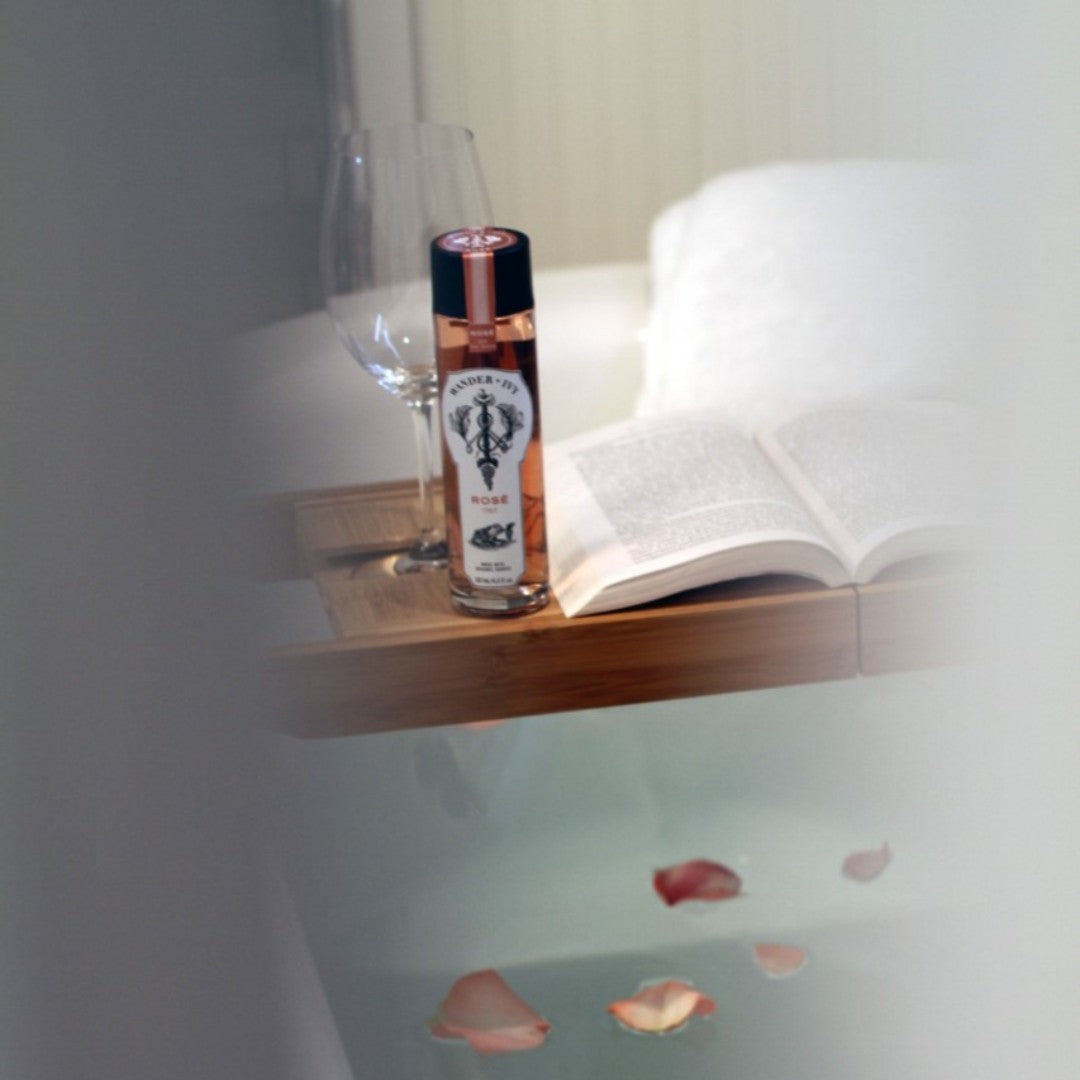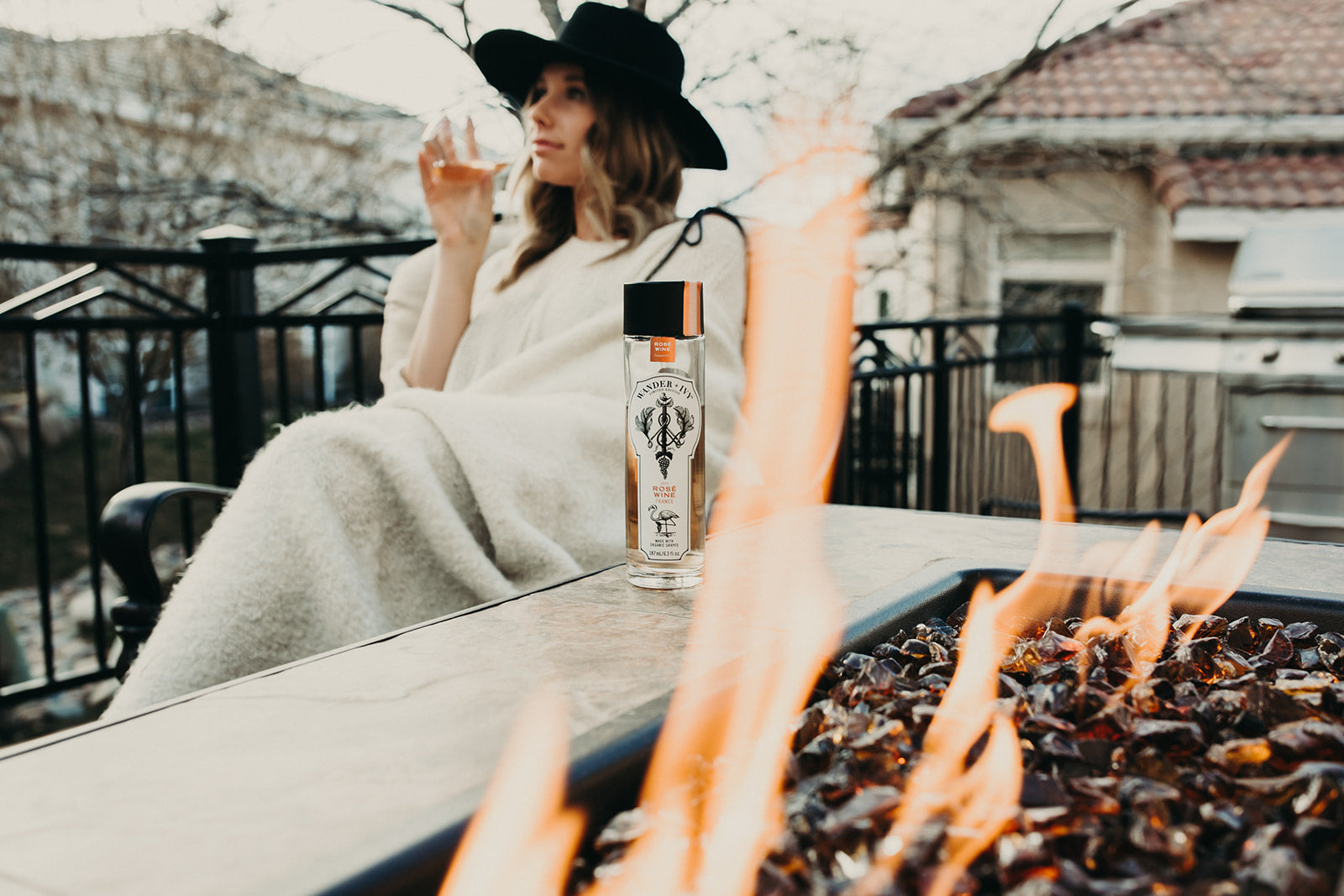
Beer: How it’s made and the different types!
As a team, one of our goals for this year is to expand our education beyond wine! Wine is and always will be our number 1, obviously, but we love broadening our horizons and are excited to learn about other types of alcohol to share with you all!
We recently sat down with our friend and beer guru, Geoff Hess, who helped scale Oskar Blues Brewery. Geoff, Dale Katechis and the Oskar Blues team revolutionized the craft beer space. It was an honor to learn from such an expert in the industry! We talked through how beer is brewed and discussed the different types of beer – there are a ton! You can watch the full conversation on IGTV and read our notes on all things beer below. Cheers!
All Things Beer
Beer is one of the most widely consumed beverages in the world. Only water and tea stand before it.
The process for brewing beer dates way back, people have been doing this for centuries. Super important to note that when you talk about beer being made, you should say, “how beer is brewed” vs. “how beer is made", just a quick tip to help you sound like you know what you’re talking about!
There are 5 main steps to brewing beer; malting, mashing, boiling, fermentation, and bottling. The entire process of brewing beer begins with using the ingredients; water, barely, hops, and yeast. These specific ingredients have been used for centuries thanks to German tradition.
Main Ingredients in Beer
Water is the first main ingredient in beer. Brewers like to use super fresh and clean water in the brewing process. Water is interestingly referred to in the beer world as “liquor”. Use this in a sentence at your next brewery tour, “Show me the hot liquor tank”, and you’ll be sure to impress the brewer, maybe even earn yourself a free sample!
Barley is the type of grain most commonly used in brewing beer. Other types of grains that can be used are wheat, corn, rice, rye, and oats.
Hops are probably something you are familiar with or at least know they have something to do with beer. Hops are the green, cone-shaped flowers of the female hop plant, they can grow up to 30 ft long, and they’re grown all over the world. Yakima, Washington is where 80% of domestic hops are grown. The Willamette Valley in Oregon is also where a large amount of hops are grown. Recognize Willamette Valley? It is also a major hub for US wine vineyards! Additionally, inside every hop plant is lupulin, which is a gland of the plant. Within the glands are different oils. Hops are classified into 2 types based on the oil content within their glands. The higher the oil content, the more bitter the hop and the lower oil content the more smooth the aroma. In general, hops help bitter the beer and help with the aroma. The bittering helps offset the alcohol and make it super smooth!
Yeast is the most important component of all the ingredients in beer! Why? Yeast converts all of the sugar from the early brewing process to alcohol.

5 Steps to Brewing Beer
Step 1 - Malting
The first step in brewing beer is malting! Malting is the process of hydrating the barley or grain seed after it has been harvested. This hydration to the seed starts the germination process, which creates sugar. Once some of the sugars from the grain have been converted to glucose molecules the brewer halts the germination process. In Germany, back in the day, brewers would lay the barley on a clean floor for this process, hydrate it and then dry the barley with heat, sometimes roasting it. Some older breweries still use this process!
Once the barley has been hydrated and germinated, it’s run through a mill where it is ground down into a fine texture. It is then added to a hot kettle which pulls out starches, proteins, and color. The liquid in the hot kettle mixture is called wort. What's wort? Wort is also known as a beer starter and consists of malt extract and water. This is the first component of beer.
Step 2 - Mashing
The malted barley that is sitting in the bottom of the kettle is called mash. At this point in the brewing process, the mash is taken out of the kettle and disposed of. As a fun fact, mash is actually a great high protein bi-product that you can supplement animals' diet with, specifically farm animals. Some breweries partner with farmers and sell their mash to help supplement their animals diets’.
Step 3 - Boiling
After the mash has been removed, hops get added to the wort that is currently left in the kettle. This mixture is then boiled, and a big aroma starts to come out of the kettle After some boiling, this mixture is added to a whirlpool tank that spins it. There tends to be some residual solids in the wort liquid so this spinning process makes the solids go towards the middle of the tank, to be removed. This mixture in the middle of the tank is called trube. The wort has now been removed of trube and goes through a cooler to be placed into fermenters for Step 4! Turbe is also a high protein source for cows as a quick fact!
Step 4 - Fermentation
We’re super familiar with this next step! This is when the goods, the alcohol, appears. We know in wine this happens when we add yeast to turn the sugar from the grape juice into alcohol and it’s a similar process in brewing beer.
The fermentation side is really the most exciting side to the entire process, this is when yeast is added! Yeast is the most important component of all the ingredients in beer! Why? Yeast converts all of the sugar from the early brewing process to alcohol as well as some carbon dioxide. This process can’t be rushed and takes a high level of attention to detail. If this process doesn’t go as planned it can create off-flavors through bacterial contamination. These off-flavors are similar to buttery popcorn and this is known as diacetyl.
At the end of fermentation, the brewer “crashes the tank”. Crashing the tank is cooling the beer so that the yeast falls to the bottom of the cone of the tank. The yeast gets pulled off and can be reused for other beers.
Step 5 - Bottling
The fermented beer is transferred to a bright tank. This is where the carbonation process happens and from there it's on to packaging. Packaging can be in bottles and / or cans, it's the brewers' preference. Once bottled or canned, it’s go time and yours to enjoy!

Different Types of Beer
Now that we’re experts on how beer is brewed, the different types of beer is something we also discussed with Geoff. The types of beer range from lower alcohol to higher alcohol, light to dark, and more or less full bodies. Sounds a bit similar to wine eh? Let’s break down the different types!
Type 1 - Lagers
Lagers use a process of cool fermentation, followed by maturation in cold storage. The German word "Lager" means storeroom or warehouse. Lagers are a great option for people who aren’t huge beer drinkers or like a milder beer!
A Pilsner is an easy-drinking, highly carbonated lager that gets its slight spicy note from hops. It’s named after the city of Pilsen in the Czech Republic, which popularized the style. One of the region’s most famous exports is Pilsner Urquell. A Helles is a malt-forward lager, with crisp, cracker-like notes. It’s not sweet, and it has a low-hop bitterness on the finish. Mexican lagers are brewed with flaked corn, or maize. Thanks to the marketing behind Corona, the world’s most famous Mexican lager, the style is often served with lime, or flavored with it. A Vienna lager is made with toasted malts that give it an amber color. Its clean flavor showcases that malt character, plus some hop spiciness. One outlier is Kölsch, an ale fermented at lager temperatures. This clear, golden style hails from Cologne, Germany. It has a crisp yet fruity flavor.
Type 2 - Ales
Ales are created through top fermentation, a process in which yeast ferments at warmer temperatures and settles at the top of the beer.
India pale ale (IPA) is the most popular craft beer style today. Its calling card is hops, a plant related to the marijuana family, cannabaceae. It imparts aromas and flavors like citrus, spice, tropical fruits, pine and berries. IPAs, especially in West Coast or American varieties, are known for bitterness, as hops are added during the hot side of the brewing process. The New England-style IPA (NEIPA) uses hops during fermentation, as opposed to in the boil. That cuts down on bitterness and gives the hops juicier aromas. NEIPAs are also often brewed with oats and wheat. They’re also unfiltered, which gives them a hazy appearance. Some are brewed with lactose and fruit purée to create a “milkshake” taste. Imperial or Double IPAs are hopped more aggressively and have a higher alcohol-by-volume (abv) content. Pale ales are usually lower in abv and hops than an IPA. They have a more balanced malt character, characterized like a biscuit-like flavor. Sierra Nevada Pale Ale is the most famous in the U.S., and many consider it a benchmark of the style.
Type 3 - Stouts
Stouts are dark-colored ales made with roasted barley that impart chocolate or coffee flavors. Some are aged in Bourbon or other wood barrels for deeper and boozier character.
Guinness, a dry Irish stout, is the world’s most popular stout, known for its nitro pour with cascading carbonation effect and a fuller, softer mouthfeel. In nitro carbonation, the gas used is roughly 70% nitrogen and 30% carbon dioxide. Other stouts include imperial, which is higher in alcohol and flavor; milk stouts, brewed with lactose; and pastry stouts, which include adjunct ingredients like cakes and pies as well as candy and fruit purées.
Type 4 - Sours
Sours, which are ales that are tart, thanks to a dose of lactobacillus during the brewing process are embraced by many people today.
Within the category are kettle sours and Berliner weisse beers, which are often blended with fruits that add a balance of sweetness.
Type 5 - Wheat Beers
Wheat Beers are beers brewed with a generous amount of the grain, which adds body and flavor.
Hefeweizen, witbier, dunkelweizen and American wheat, are brewed with a generous amount of the grain. Allagash White is a world-class example of a witbier. A gose is a wheat ale brewed with salt, which gives it a savory character. It can also be blended with fruits
Pairings
We definitely could not talk aout beer types without talking about the food that goes with them! First, beer is an excellent additive for cooking! Beer brats, beer bread, and the infamous beer can chicken. The recipe, linked here, for beer can chicken is seriously amazing - you need to try it! Additionally, in terms of pairing beer with food, similarly to wine, keep it simple - the lighter the beer the lighter the dish. Lagers paired with salmon and seafood can be great. For Ale style beers, backyard bbq dishes, and darker proteins are great options.
There you have it, how beer is brewed, different types of beer, and what to pair your beers with. New alcohol knowledge for 2021! Cheers!
Shop all of our single serve wines made with organic grapes on our online wine shop.


